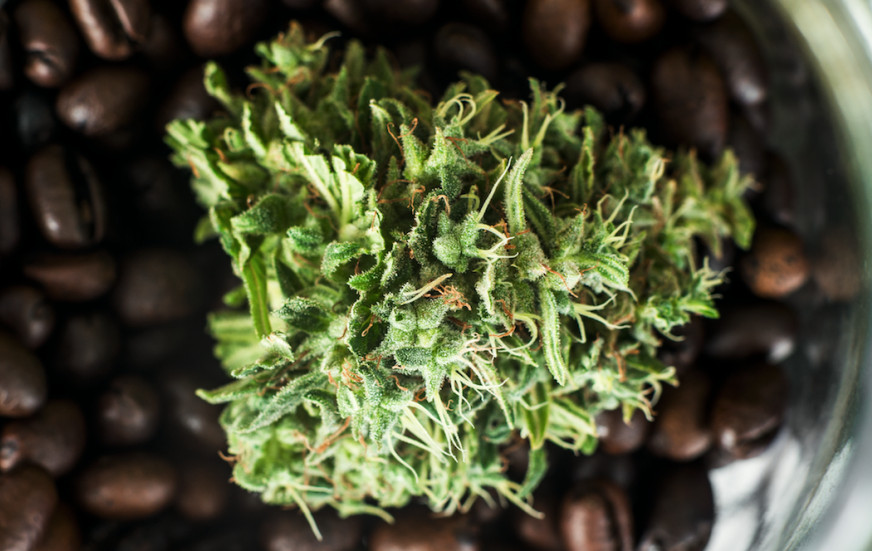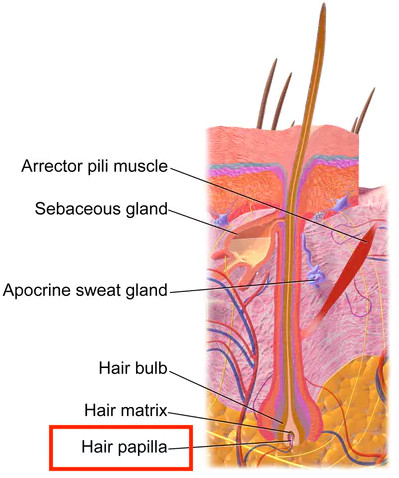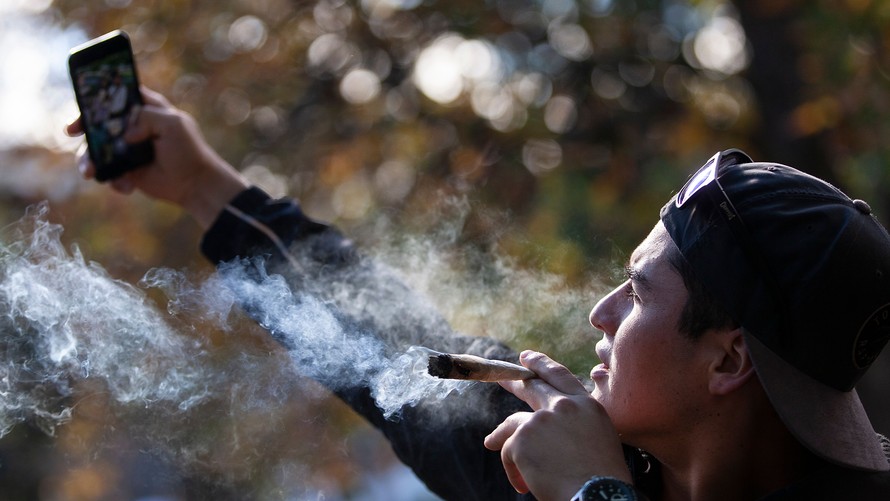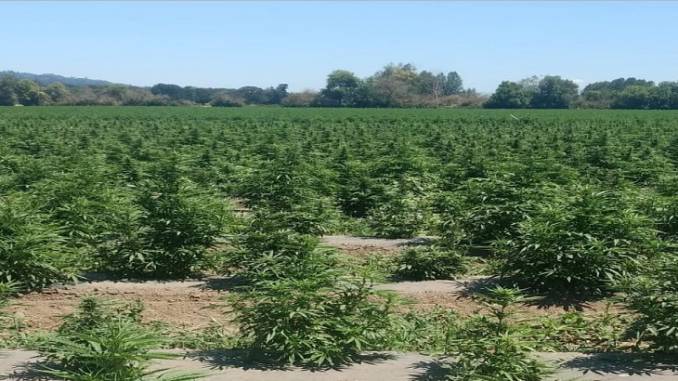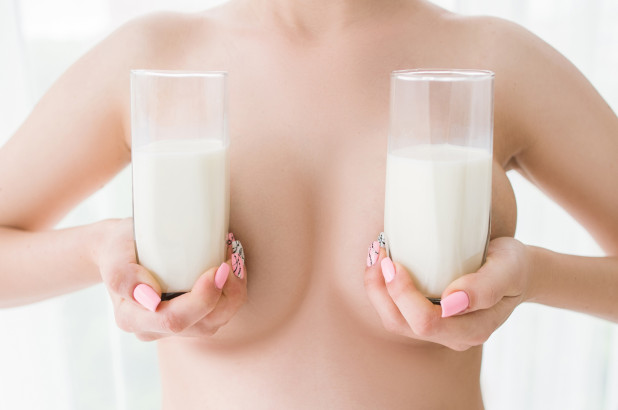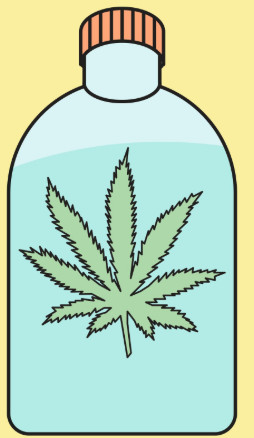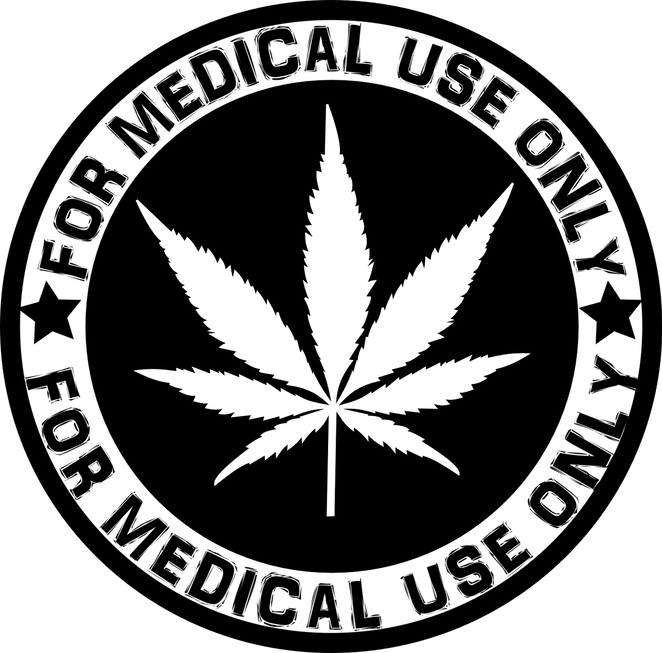TODAY, CANNABIS CONTINUES its slow march toward nationwide decriminalization with voters deciding whether to allow recreational use in Michigan and North Dakota, and for medical purposes in Utah and Missouri. As states keep chipping away at federal prohibition, more consumers will gain access, sure—but so will more researchers who can more easily study this astonishingly complex and still mysterious plant.
At the top of the list of mysteries is how a galaxy of compounds in the plant combine to produce a galaxy of medical (and, of course, recreational) effects. For example, THC feels different when combined it with cannabidiol, or CBD, another naturally occurring compound in cannabis, but the reasons aren’t fully known. It’s called the entourage effect: THC, like a rock star, only reaches its full potential when it rolls with a crew, consisting of hundreds of other compounds in the plant that scientists know about so far.
But the problem with researching a schedule I drug is that the government doesn’t want you to do it. Yet as more states go legal, cannabis continues to climb out of the scientific dark ages. Because it’s not just about giving people a comfortable high, but about developing cannabis into drugs that could treat a massive range of ills.
First, some cannabis basics. THC and CBD are cannabinoids, which means they bind to receptors in the human body’s endocannabinoid system, specifically the CB1 and CB2 receptors. Researchers only discovered the endocannabinoid system in the early 1990s, but it appears to regulate things like mood and immune function.
You may have noticed that cannabis’ effects can differ wildly from experience to experience. Eat a weed brownie, for instance, and the THC goes straight to your liver, where it’s metabolized into 11-hydroxy-THC. That metabolite “has five times the activity at the CB1 receptor, the psychoactive one, as THC itself,” says Jeff Raber, CEO of the Werc Shop, a cannabis lab in California.
That’s why it’s so easy to overdo it with edibles. When you smoke cannabis, the THC at first skips the liver and goes straight to your bloodstream. It’s about five times less potent that way than if you eat cannabis, meaning that chowing down on 10 milligrams of THC is roughly equal to smoking 50 milligrams of the stuff.
Mode of ingestion, then, is a big consideration in the cannabis experience. But so too are factors beyond your control. “We’re pretty aware that the endocannabinoid system is not a static picture throughout the day,” says Raber. “Why it changes, what causes those changes—those are other levels of complicated questions.” Cannabis might hit you differently during the day than at night, and can also depend on your mood or whether you’ve eaten.
But that’s not all. THC also interacts with other cannabinoids in your system, and it has a complicated relationship with CBD in particular. Anecdotally, cannabis users have reported that CBD can modulate the psychoactive effects of THC—think of it sort of like an antidote to the paranoia and anxiety that comes with being too high. That might be part of the reason edibles can feel so powerful: If you eat a brownie loaded with just THC, you aren’t getting the CBD you would if you smoked regular old flower. (Not that some manufacturers aren’t also adding CBD to their edibles. CBD is so hot right now, but it’s hard to find flower with high CBD. Cultivators have over the decades bred highly intoxicating, THC-rich strains at the expense of CBD.)
With cannabis growing more legitimate as a medicine, researchers are finally putting hard data to these anecdotal reports. They’re beginning to understand how CBD might modulate the often unwelcome effects of THC.
Consider the drug Marinol, a synthetic form of THC available since the 1980s. It’s a good appetite stimulant, but it’s also good at getting patients high and paranoid. “When you just stimulate the CB1 receptor with this pure molecule, it’s very intoxicating and patients don’t tolerate it very well,” says Adie Wilson-Poe, who researches cannabis for pain management at Washington University in St. Louis.
However, give patients a drug like Sativex—which combines THC with CBD—or even pure cannabis flower or extracts, and they tolerate it much better. “We specifically see that CBD protects against the paranoia and anxiety and the racing heart that THC produces,” Wilson-Poe says.
It all comes back to the psychoactive CB1 receptor. THC is an agonist that fits nicely into CB1, activating it. “CBD can’t do that at the CB1, but it does sort of sit in the pocket,” says Wilson-Poe. “It can compete with THC for the spot in the receptor.” Which means that if you take CBD with THC, there may be fewer receptors available for the THC to activate, thus modulating the psychoactive effects, like paranoia.
“But that’s probably not the whole story,” Wilson-Poe says, “because CBD has at least 14 distinct mechanisms of action in the central nervous system. So it does a little bit of something at a whole bunch of places, and we probably can’t attribute the anti-paranoia or anti-anxiety effects just to CB1 occupancy.”
Now let me add yet another complication to our growing list of complications: THC and CBD are far from alone in the cannabis plant when it comes to medicinal properties. Those two might be anti-inflammatory, for instance, “but if you were to vaporize a whole flower, you’d be consuming potentially a couple dozen anti-inflammatory molecules at once,” says Wilson-Poe. “In this sense I think of whole-plant cannabis as like a multivitamin for inflammation.” (Because there are so many important compounds at play, some researchers prefer the term ensemble effect over entourage effect. “Entourage” makes it sound like everything is supporting the rock star that is THC, when the reality might be more nuanced.)
There might also be medical applications when you don’twant the entourage effect at work. One of THC’s more famous treatments, for instance, is for lowering eye pressure to treat glaucoma. “We found that it works, and THC does a nice job,” says Indiana University, Bloomington researcher Alex Straiker, who studies cannabinoids. “But it’s actually blocked by CBD. People often think, oh yeah, CBD and THC work together. But in terms of CB1 receptor signaling, they actually oppose each other, or at least CBD opposes THC.” That’s not to say, though, that CBD isn’t having some sort of beneficial effect on its own when it comes to treating glaucoma.
Plus, there are many other kinds of receptors in the endocannabinoid system that these compounds could be targeting. “It’s messy,” Straiker says.
So while CBD seems to mitigate the unfun effects of THC, it also might get in the way of certain medical benefits that THC has to offer. But because there’s seemingly no end to the complexities of cannabis, CBD might also enhance THC’s anti-cancer properties. Research has found that if you apply THC and CBD to cancer cells in the lab, the combination is more effective than THC alone at both inhibiting the growth of those cells and outright killing them. The future of medical cannabis, then, depends in large part on teasing apart the entourage effect—leveraging it in some cases, and maybe breaking up the entourage (or ensemble) when THC or CBD alone is most beneficial.
“We need to understand which constellations of plant chemistry are best suited for which indications and which kinds of patients, and which form of the CB1 receptor you happen to carry, because there are lots of mutations in that gene,” says Wilson-Poe. “So understanding these mechanisms is absolutely crucial for providing these patients with personalized medicine that alleviates their symptoms without producing the unwanted side effects.”
Hate to do this, but we’ve got one last problem. For decades, cannabis users have claimed that different strains of cannabis produce different effects—maybe it makes them sleepy, maybe it gives them energy. And that’s been true even as CBD was largely bred out of cannabis in North America in favor of THC. “Well, if they’re all high THC, it’s got to be from something else,” says Ethan Russo, director of research and development at the International Cannabis and Cannabinoids Institute, who studies the entourage effect. “And that something else is terpenoids.”
Yes, another member of the entourage. Unlike THC and CBD, you can find terpenoids not just in cannabis, but across the plant kingdom. They’re handy little molecules that plants use to ward off insects, and they’re what give cannabis that characteristic smell (same for terpenoids in lemons and pine needles).
And science knows what some terpenoids found in cannabis do pharmacologically in the brain. For example, linalool is one that has sedating and anti-anxiety properties. “So it might make sense that when you combine its anti-anxiety effect with that of cannabidiol [CBD], then they boost each other,” says Russo.
The entourage effect, the ensemble effect—whatever you want to call it, the phenomenon might get more complicated before it gets clearer. But researchers continue to tease apart the chemistry of cannabis, unlocking its true potential as a medicine. Mystery … almost solved.
Credit: wired.com


